I know what you must be thinking – I just completed four months of gawking at birds while we were in Florida, and here I am talking about birds again. Lucky for me, we arrived at Dauphin Island, AL where neotropical migratory birds make their first landfall at the beginning of the spring season. Migration begins in March and peaks in mid-April. If you’re not a “bird fan”, then you probably won’t be interested in the rest of this post. Even my hubby gave me an agonized look when I asked him to edit yet another bird story!
But first, what the heck is a neotropical bird?
A neotropical migratory bird is one that breeds in Canada or the United States during our summer, then spends our winter in Mexico, Central America, South America or the Caribbean islands. The majority of neotropical migratory birds are songbirds, such as warblers, thrushes, tanagers, and vireos.
Dauphin Island is the first landfall for many neotropical migratory birds after their long flight across the Gulf from Central and South America each spring.
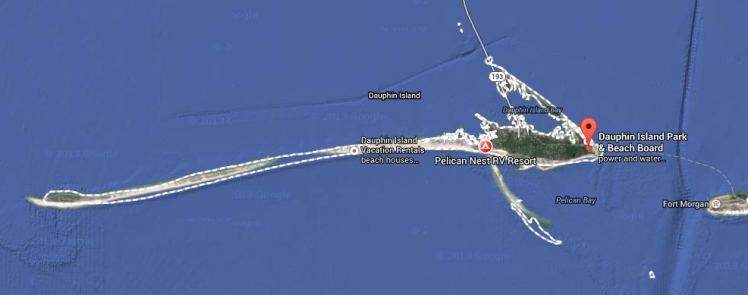
After a recent storm here I ventured out to the Audubon Bird Sanctuary and the Indian Shell Mound Park, where I was amazed by the abundance of “fall out”, a term used to describe these large groups of arriving migrants. The cute little colorful birds were all over the place, hopping and foraging. And it seemed like their stopover lasted only a single day, for when I went back the following morning the area was already quiet.
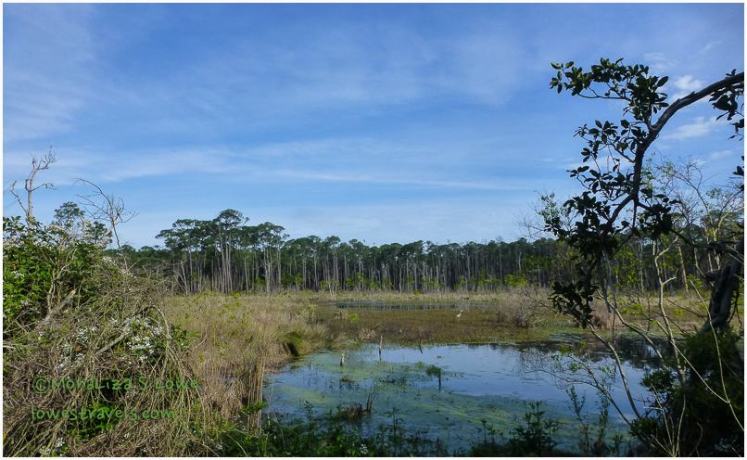
The Dauphin Island Audubon Bird Sanctuary Center lists 347 species that have been sighted on the island. The Center distributes a migration calendar which lists each bird species expected to arrive, and on what dates. This year, it’s estimated that the peak spring migration will be around April 15-25 – depending on the weather – but I’ve already seen lots of birders and photographers swarming the island. Although we’ll be at Gulf Shores in late April, I might just hop on the ferry to come back here for another look!
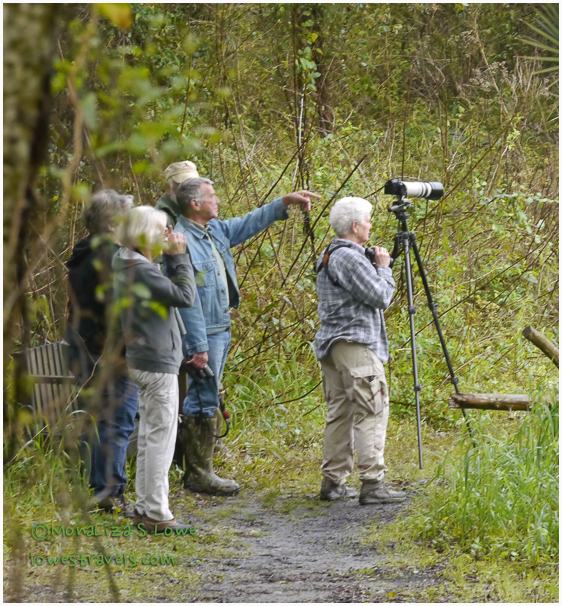
Here are a few snaps that I managed to capture that day. These tiny birds are skittish and move around a lot. To make it more interesting, I added some fun facts that I learned about these particular neotropical migratory birds:
- Migrating birds cross the 600 miles of the Gulf of Mexico without resting.
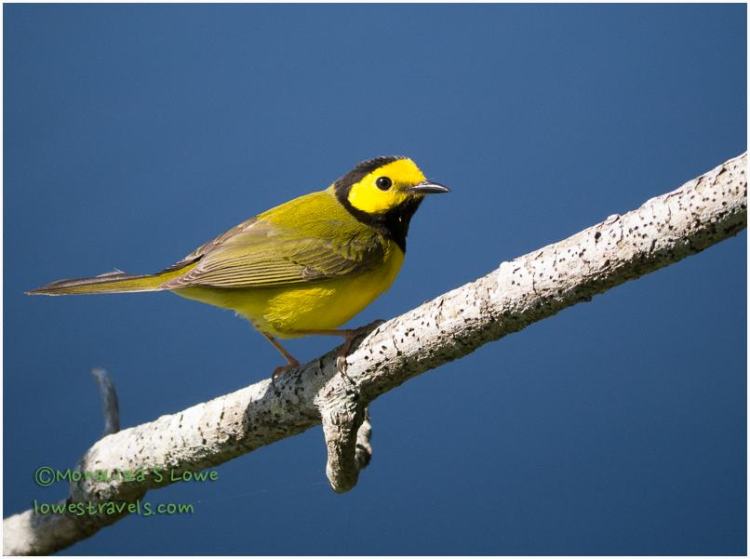
- For most long-distance migrants, the birds are born genetically programmed to fly in a certain direction for a certain amount of time.
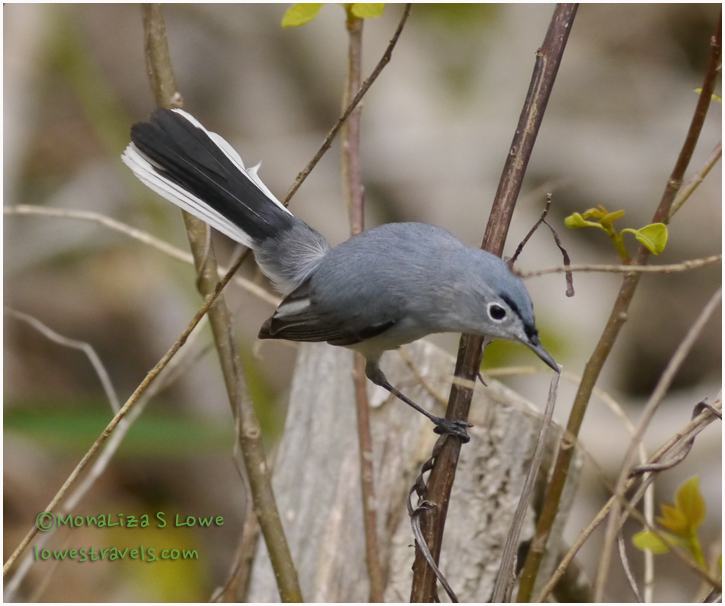
- The time it takes a single bird to complete a full one-way migration can range from a few weeks to up to four months, depending on the total distance, weather, flight speed, route and stopovers.
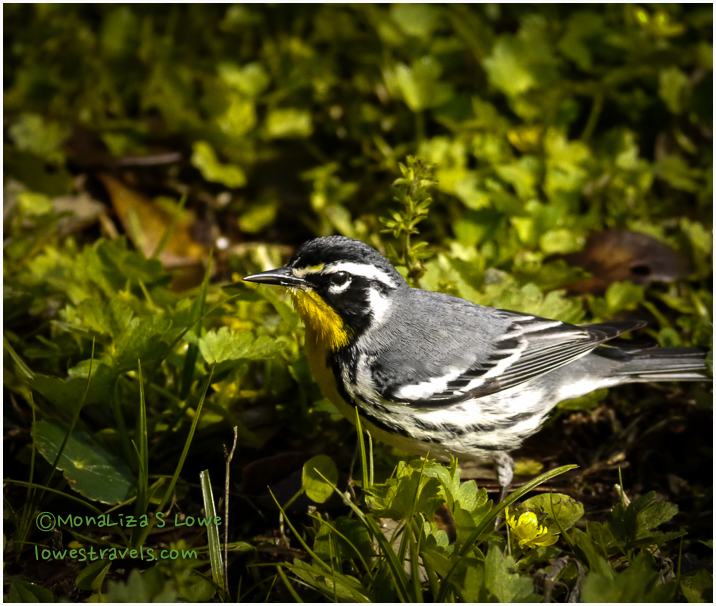
- Ninety percent of migrating birds fly at airspeeds between 15 and 45 miles per hour.
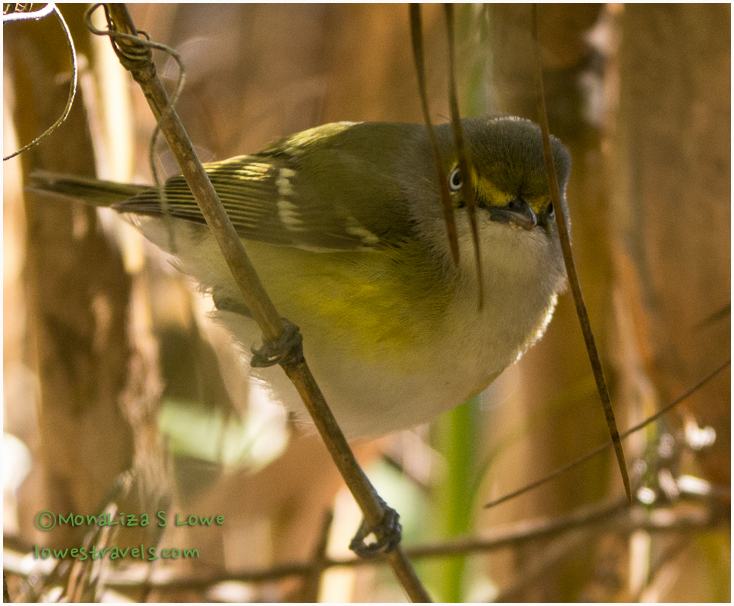
- Many songbirds migrate at night, in part to avoid the attention of predators that are also migrating, such as raptors.

- Migrants have an internal clock that controls the onset of migration and their pre-migration preparations.

- Migrating birds use the stars and sounds from the earth below to find their way at night. Buntings specifically use the pattern of stars around the North Star for navigation. Amazing!
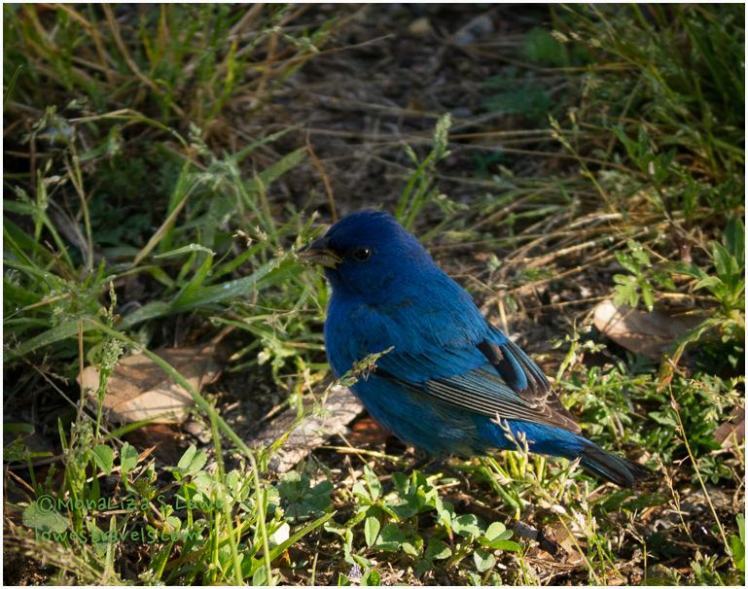
And that’s just a few of the gorgeous specimens I’ve seen the last few days! In addition to all of the migrants passing through, we’re also being entertained daily at our campground (Steve’s review here) by the constant sounds and visits from the locals – Cardinals, Finches, Mockingbirds, Grackles, Doves and Blue Jays, who seem to rule the island. These guys are eating us out of house and home, as we’ve been refilling our feeder every day. But there’s nothing like waking up every morning to the sounds of all these wonderful birds singing to us!

great shots and glad to see the migrants are on the way…yeah!
I would love to see so many bird species beginning their northern migration. The indigo bunting is one I have yet to see, but maybe I will be lucky when we are in the Panhandle later this month. Your photos are stunning.
Pam, on your route to the west, you will have the chance for they are back in town.
Gorgeous, gorgeous, gorgeous! The colors just pop on those photos. What an awesome Sanctuary.
It’s great to see your photography getting better and better. Calling National Geographic now.
Thank you Rod, a great compliment from a professional makes my day.
What a wonderful stopover! Great shots!
When are you applying to National Geographic as their newest wildlife photographer?
Soon Carol, ha ha after running around the country looking for more birds to photograph.
I’m sure you would get the job!
OMG ML! Fantastic shots! It’s not easy getting shots of warblers. Birdwatching, photography go very nicely with the RV lifestyle. Wonderful blog post!
Thanks Maureen, Yes, I had a wonderful time taking pictures of these warblers, very challenging but because there are so many of them I had the most chance of getting a good pose from them.
John read your blog before me. He says, oh, boy, wait til you see the Lowe’s blog. You will love it…more birds! Haha! I do love it and I am not a birder.
I do enjoy the colorful birds. You did an amazing job capturing each bird. Not sure which is my favorite but I do like the Scarlet Tanager and that Indigo Bunting is gorgeous. I’ve never heard of or seen this one. Thanks so much for all the interesting facts.
Steve does such a wonderful job on his campground reviews. Thanks, Steve, for the useful and very helpful reviews!
Thank you Pam. Steve has been teasing me that I have become a birder and I refuse to accept. Simply because I don’t bring a binocular nor a field book when I photograph a bird. I just love them, especially these little colorful ones. And I got caught into the birding here because of the spring migration and it is celebrated.
We are going to miss this island for this is the only place with diverse birds visiting our site everyday. Even Steve is starting to like them that he has chosen a favorite, Indigo Bunting.
Wow! I’m all for the birds so I really enjoyed your post, most especially those pictures! I’m putting this place “on my list’. Sue
Ill add more bird pics in my collection page so you can see more of my captures while in the island.
Oh, Oh, Oh!! How COLORFUL!!! The blue bunting is my favorite! Beautiful photos!
Thank you and there are lots of them now foraging in our site.
Wow, MonaLiza! How lucky you were to experience a fall-out! That’s something we’ve dreamed of for years. Your photos of the birds are gorgeous — we know how difficult those little songbirds are to photograph. We’re hoping that we’ll have the opportunity to see some of the same birds while we’re in the area. Happy birding!
When there are so many of them, I have lots of chances to get a good one. These little creatures are so jumpy. Looking forward to more birding with you and Eric.
Fantastic shots, Mona. What a gorgeous array of birds. I love the colour of the Indigo Bunting, and the Gnatcatcher is so elegant. Just imagine flying for 600 miles without a rest! An amazing feat. 🙂
Thanks Sylvia, when I wrote the fact about them flying 600 miles, I paused and imagined how tired these little birds could be. Amazing critters.
Yes they are. 🙂
Oh my MonaLiza…..absolutely beautiful! I enjoyed this post so much. Of course the photography is outstanding, but I also enjoyed the interesting facts. I’m glad you love birds and share your enthusiasm.
Thank you Gay, I guess it is really showing how much I enjoyed and love birds! And Dauphin Island is just full of them. I have been out everyday when it does not rain. Really fun.
Amazing pictures, very professional. I wish I could remember all of their names.
Thank you. Identifying and remembering is truly a challenge.
ML, you have turned into a Pro photographer. Beautiful pictures and informative as always.
Mahesh you are so kind. Thank you.
MonaLiza, you have definitely become quite the birder. Terry and I have been carrying on about your bird photography all morning. Thanks for all the wonderful facts. The bird images alone would have made this post wonderful but adding the fun facts you did was just fabulous.
Perhaps being in places where there are lots of birds makes me a birder 🙂 They are so dang cute but jittery. I thought adding the fun facts with make it interesting and glad that it did add something to the post. Thank you Luann. I think I may have found my niche in photography,with birds as my models.
I believe you have. 🙂
The yellow one caught my eye the most ……… and also, …… the camera and the tripod. 😆
Geez, catching a ferry ride to come back and see the birds. That’d be wicked. You really love ’em birds.
We actually did not realize it was spring migration when we arrived in the island. The birds were the added bonus of our stay there which I love of course. Bringing a tripod is a hassle so all these were taken without one besides the birds moves a lot.
Great bird photos, love the Indigo Bunting.